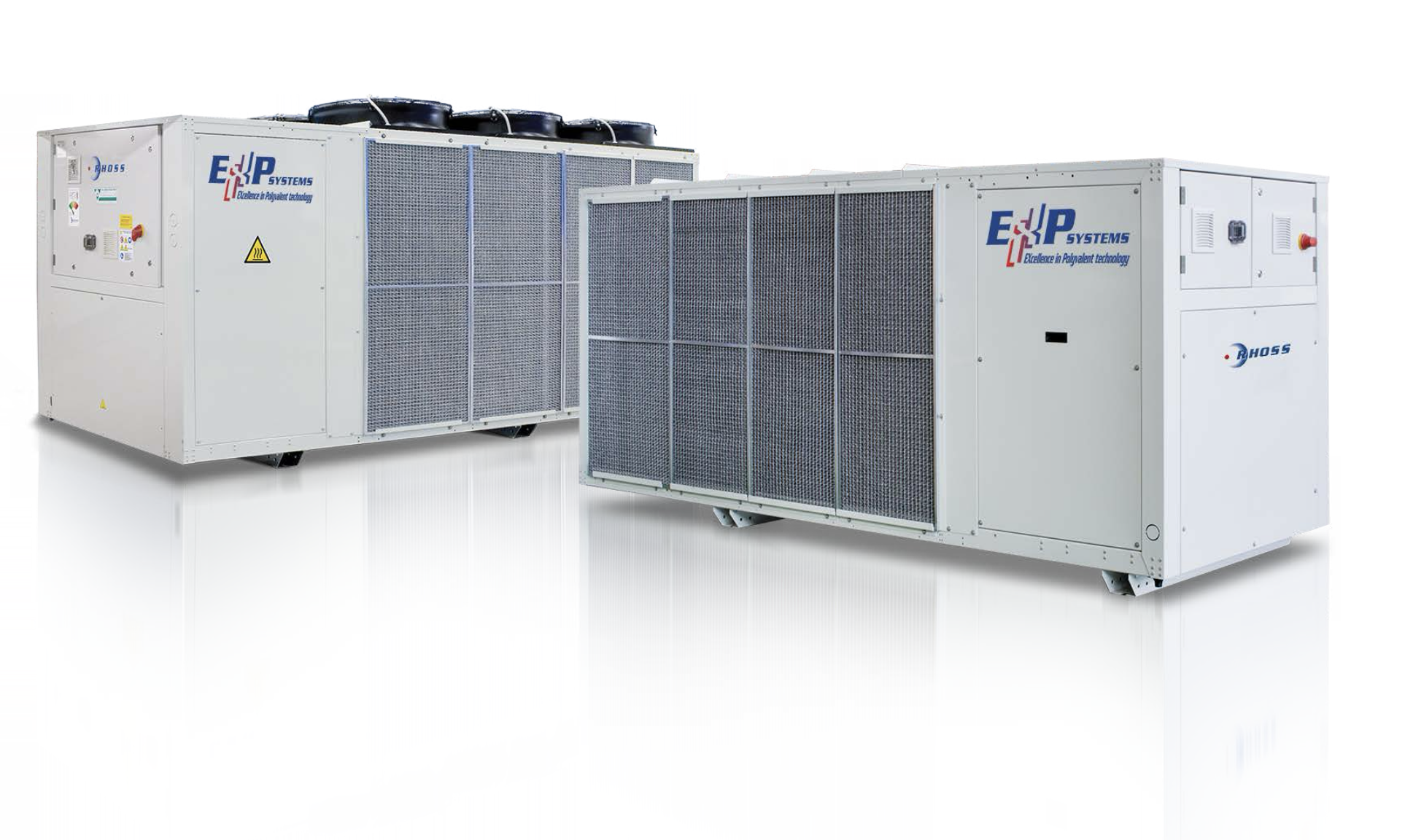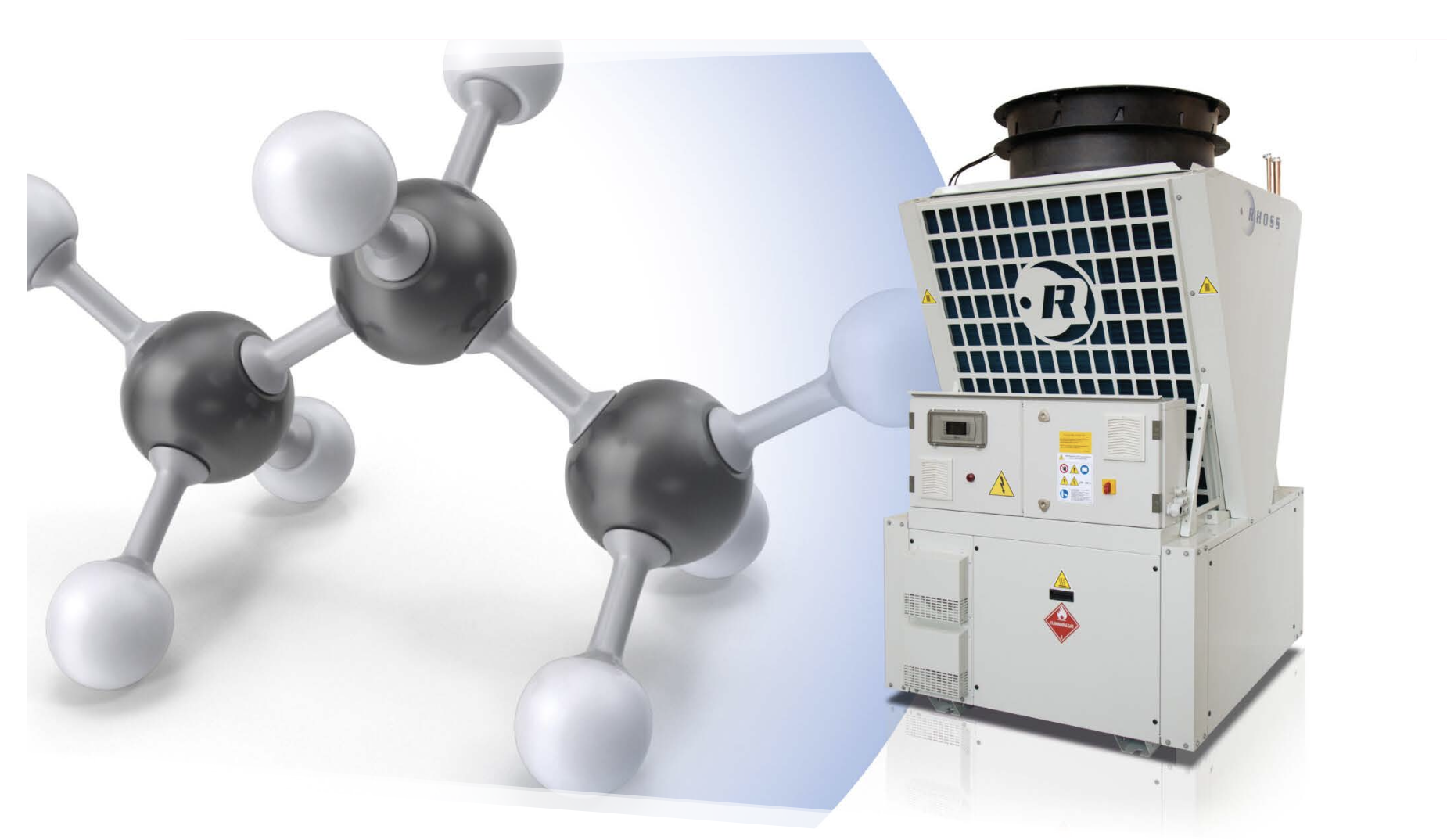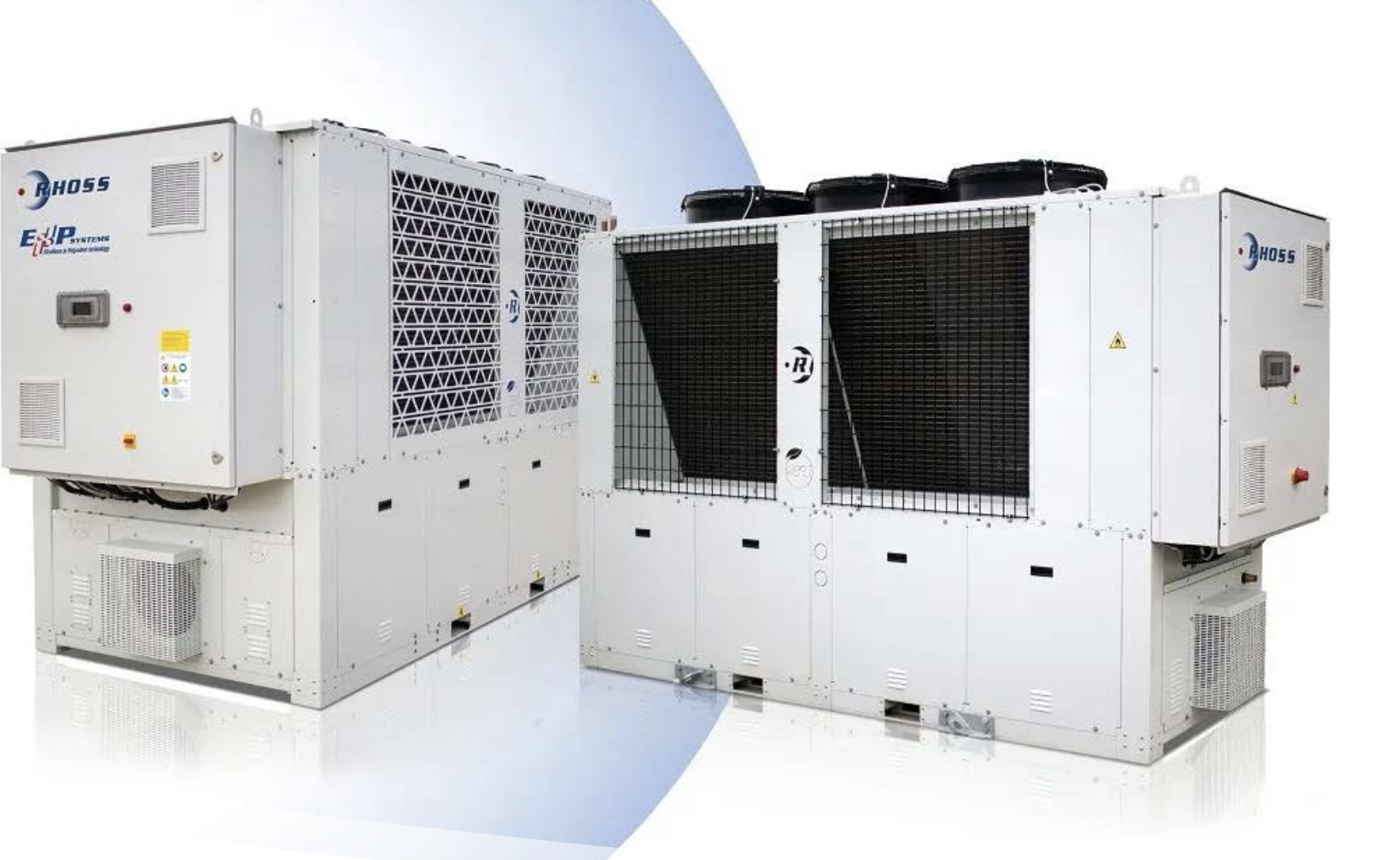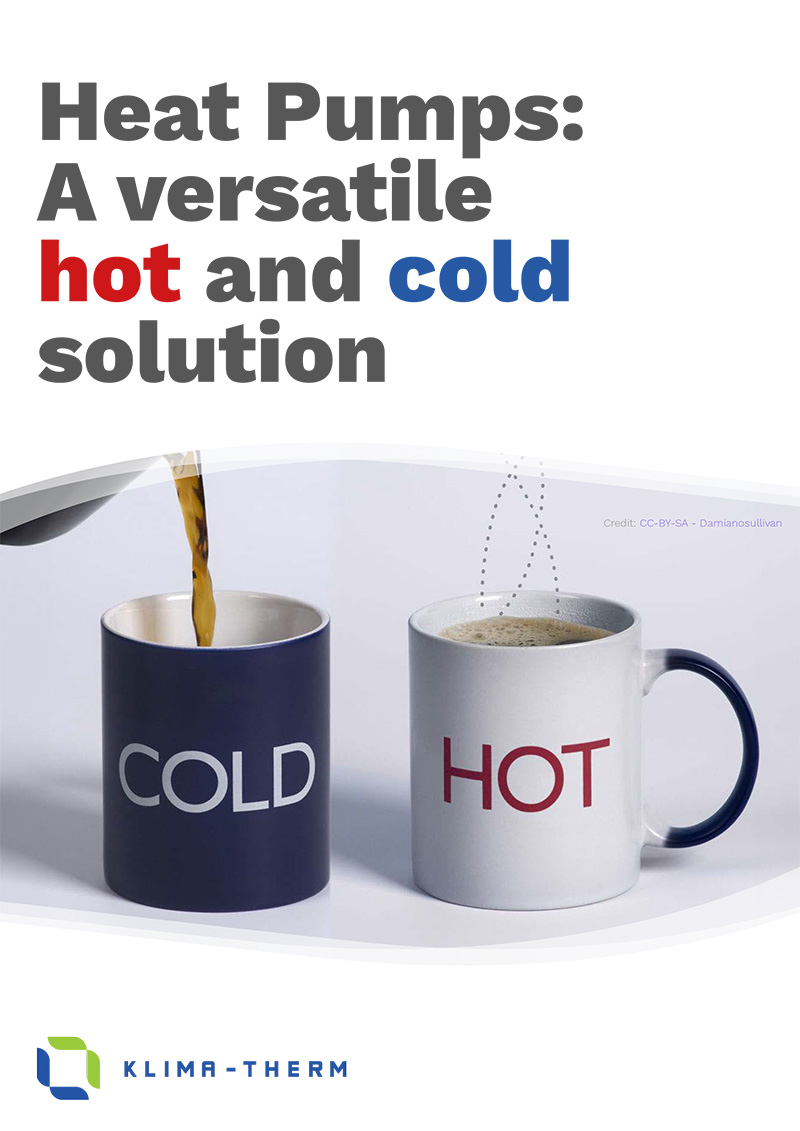Heat pumps are not just for heating; they can also provide cooling when equipped with a reversing valve. This versatility, coupled with their energy efficiency and environmental benefits, makes them a compelling choice for both residential and commercial applications. While often misunderstood, heat pumps offer a sustainable and cost-effective solution for year-round comfort; find out more here
Although its primary function is heating, a heat pump can also be used for cooling, provided it includes a reversing valve. Heat pump cooling might sound like a contradiction in terms, but this apparent contradiction is one of the great strengths of this remarkable device.
Misunderstandings over what distinguishes a chiller from a heat pump arise largely because the differences between the two are fairly subtle. Nonetheless, despite the fact that both technologies boast the same key components (a compressor, condenser, expansion device, and evaporator), chillers and heat pumps are not the same.
Chillers, for example, are cooling specialists, whereas reversible heat pumps can both heat and cool. (The latter can also include a reversing valve, which allows the heat pump to change the direction of the refrigerant flow, enabling it to heat or cool the space.)
Although they are not identical, however, arguably, the only real distinction between a chiller and a heat pump is that the former is designed to remove heat from a space or process stream, making it cooler and rejecting heat to the environment, while the latter is typically designed to extract heat from the environment and use it to provide useful heat.
Energy efficiency, cost savings, environmental benefits, and reliability are features of both chillers and heat pumps, but heat pumps are particularly versatile when it comes to controlling an environment because (if they are reversible) they offer cooling as well as heating.
The demand for space cooling in the UK’s domestic and non-domestic buildings is currently only about 10% of total electricity use. This is likely to increase dramatically as global temperatures rise and expectations of comfort grow.

It is, for example, reckoned that the cooling of buildings is currently responsible for about 20% of total electricity use worldwide but that the electricity needed for cooling will more than triple by 2050.
The International Energy Agency (IEA), which works with governments and industry to shape a secure and sustainable energy future, estimates heat pumps globally have the potential to reduce carbon dioxide (CO2) emissions by at least 500 million tonnes in 2030, equal to the annual CO2 emissions of all cars in Europe today.
It concludes: “Heat pumps, powered by low-emissions electricity, are the central technology in the global transition to secure and sustainable heating”… and, in the case of reversible heat pumps, cooling too.
Sustainable heating and cooling
But what do we mean by sustainable heating and cooling? One of the main features of low-carbon equipment powered by clean electricity, like heat pumps, is cost effectiveness, especially compared with fossil fuel-based technology.
This has been confirmed with the publication of a major new IEA report. Strategies for Affordable and Fair Clean Energy Transitions reveals that putting the world on track to meet net zero emissions by 2050 will require additional investment.
It will also reduce the global energy system’s operating costs by more than half over the next decade compared with a trajectory based on today’s policy settings. The result, it concludes, is a more affordable and fairer energy system for consumers.
End-user buy-in
One barrier hampering the adoption of clean energy technologies such as heat pumps is a lack of familiarity. The IEA report points out: “Many of the changes required to move to a net zero emissions system require active buy-in from households.
“Upgrading the energy performance of buildings and appliances, electrifying end uses where possible, and investing in rooftop solar, electric mobility, and technologies such as heat pumps will not be possible without broad public support. It will also not be possible without upfront spending.”
That places a heavy responsibility upon people who market and supply this equipment to educate the market about its advantages. These are manifold and include:
“Upgrading the energy performance of buildings and appliances, electrifying end uses where possible, and investing in rooftop solar, electric mobility, and technologies such as heat pumps will not be possible without broad public support. It will also not be possible without upfront spending.”
That places a heavy responsibility upon people who market and supply this equipment to educate the market about its advantages. These are manifold and include:
- Impressive energy efficiency.
- Reduced carbon emissions compared with fossil fuels
- Lower running costs than the alternatives.
- Safer operation (because no combustion is involved in their use).
- Less maintenance (and therefore lower service costs) than a combustion-based heating system.
- Save spacing since there are no fuel storage requirements.
- A long lifespan.
- All-in-one heating and cooling system for both summer and winter comfort.
The report acknowledges that heat pumps have drawbacks, including higher upfront costs. It admits that, under current policies, the lifetime cost of heat pumps is 14% higher than that of gas boilers. However, it adds, “The vast majority of governments in advanced economies have introduced subsidies far exceeding this additional cost.”
Since it is powered by electricity, the technology is also susceptible to power outages, although a robust power network or uninterruptible power supply can neutralise this threat.
Other advantages of simple mitigation measures largely offset heat pumps’ downsides. On balance, therefore, heat pumps clearly represent a smart investment.
High cost of electricity in the UK
But end-user buy-in to heat pump use depends on how cost-effective the technology is, and this is, of course, heavily influenced by electricity and gas prices. The European Heat Pump Association (EHPA) 2024 has published a report with a simple and direct central message: affordable electricity leads to bigger heat pump sales.
Electricity prices in the UK, however, remain relatively high compared with other European countries. The UK-based Heat Pump Association (HPA) explains: “A significant contributor to high electricity prices in the UK is the disproportionate application of Environmental and Social Obligations, often referred to by the government as ‘policy costs’ and known commonly as ‘green levies’.
“Domestic electricity consumers bear around 85% of these levies, which means a typical heat pump consumer pays £170 more than an equivalent gas boiler consumer in levy costs per annum.”
Late last year, the HPA proposed the introduction of an Interim Domestic Heat Pump Tariff Discount to provide what it said would be a short-term solution to reducing the price of electricity relative to gas. In contrast, fundamental reforms to the electricity market were considered and implemented.
For the time being, UK heat pump sales per household remain the lowest across Europe, with only 2.08 heat pumps per 1,000 households sold, according to the EHPA. One way to boost the popularity of heat pumps is to highlight their versatility and flexibility in terms of comfort control, which brings us right back to where we began – the ability both to heat and cool.
Also known as a polyvalent system, this is an intelligent solution to air conditioning requirements in systems where the heating demand is simultaneously or independently combined with a cooling request from the building.
Polyvalent heat pumps can provide an extremely versatile solution to the problem of decarbonising heat. They can heat or cool but are most effective when operating in simultaneous heating and cooling mode, making use of the otherwise rejected heat produced from the production of chilled water.

A polyvalent system is an intelligent solution to air conditioning requirements in systems where the heating demand is simultaneously or independently combined with a cooling request from the building. The units adapt well to various types of systems, thereby guaranteeing unique efficiency and versatility.
The Rhoss heat pump range supplied by Klima-Therm is an example of a system that can satisfy cold and hot water demands simultaneously or independently within a single unit. Air and water-cooled units are available from 5 to 800kW, including new Class A models with particularly high ESEER efficiency levels at partial loads.
Which polyvalent heat pump?
Selecting the most suitable unit for your system has never been easier – simply talk to an expert like Klima-Therm, which has 25 air-cooled models and 27 water-cooled models to choose from, using non-flammable, energy efficient, low GWP R454B refrigerant gas.
The Klima-Therm-supplied polyvalent range is especially flexible since it is suited to operate via two, four and six-pipe systems at any time of year. With unit operation down to an ambient temperature of -20°C, the polyvalent units are available with a huge variety of accessories including electronically commutated (EC) fans, PFC, pre-painted coils, and vibration mounts.
New range of high-temperature heat pumps
Klima-Therm also distributes the Rhoss POKER290, a new range of high-temperature, low global warming potential (GWP), air-cooled reversible heat pumps with silent, brushless EC axial fans and compressors.
This heat pump produces high water temperatures and a wide span of operational limits. It features scroll hermetic compressors and natural, non-toxic, eco-friendly R290 (propane) refrigerant gas, which has a GWP of 3, so there are no harmful greenhouse gas emissions or F-gas requirements.
Suitable for a host of applications, including hotels, restaurants, supermarkets, theatres, universities, hospitals, and nursing homes, the modular POKER290 allows heating capacity to be increased easily according to plant load requirements.

This is achieved quickly and simply by connecting up to four units to produce domestic hot water covering a capacity range from around 48 to 190kW. The heat pump’s modular feature also ensures full system redundancy for the ultimate in reliability.
Offering high efficiency both at full and partial loads (CoP in A class, SCoP 3,2 MT, SCoP 3,81 LT, A+ Class), POKER290 modules are completely independent but managed in a synergic way.
The versatile POKER290 can generate temperatures up to 75°C with outdoor air as low as -20°C. It is also possible to make the most of the heat pump in summer mode, producing cold water for air conditioning as well as chilled water at down to -10°C.
The charge of this A3 refrigerant is less than 5kg for any kind of installation, maximising safety and allowing for outdoor installation without any restrictions. Moreover, the heat pump is fitted with an infrared gas sensor so, if there is a refrigerant leak, the unit is automatically disconnected from power supply and the technical compartment is ventilated.
Other features of the POKER290 include integrated anti-legionella cycle management and low noise operation of just 76dB(A). Furthermore, the unit’s easy, complete accessibility makes it fast and simple to service and maintain.
Furthermore, a touch screen is an option, and the POKER290 can be interfaced with Rhoss’s System Touch Manager (SYS-TO) to manage fan coils, the air handling unit, and auxiliary sources.
Flexible installation options
Also running on propane and marking a significant step forward in sustainable heating solutions, Klima-Therm has introduced UniPACK-P and UniPACK-P EXP reversible heat pumps and multipurpose units which feature high efficiency scroll compressors and negligible global warming potential (GWP) propane (R290) natural refrigerant.
Designed for new installations and renovations, the UniPACK range comprises 11 sizes in high-efficiency (T) and super-silenced (Q) versions, covering cooling capacities from around 50 to 160kW.
The super-silenced version comes complete with compressor technical compartment soundproofing and reduced speed fans.
These heat pumps offer exceptionally flexible installation options, with two or four compressors available in single or dual refrigerant circuits. Multipurpose EXP units offer the same configurations.
The UniPACK-P and UniPACK-P EXP ranges offer high seasonal performance (low temperature SCoP up to 3.86 and medium temperature SCoP up to 3.28) with extended operating limits. They produce hot water up to 72°C, even with external air down to -12°C and cold water from -10°C to 20°C with external air up to 50°C.
The latest hermetic rotary, scroll type compressors used in the heat pumps offer thermal protection and casing heater and two-four capacity steps with high efficiency at part loads.
Furthermore, external rotor axial type electric fans are equipped with internal thermal protection and accident protection grilles. The electric fans, based on the sizes, are EC fans or fitted with a proportional electronic device for continuous adjustment of the rotation speed.
Fast, accurate microprocessor electronic control with adaptive function plus logic makes the heat pumps particularly cost-effective to operate and easy to use. On top of this, a comprehensive set of measures on the heat pumps that enhance safety and boost reliability includes refrigerant leak detectors, ventilation systems, and coil protection nets.
Other key features include the SIR integrated Rhoss sequencer for domestic hot water production management and plug & play logic with a wide range of pumping groups.
UniPACK-P and UniPACK-P EXP contain a host of factory fitted accessories including single or double electric pumps, one of which automatic in standby. The electric pumps are available in the low or high head versions.
Inverter pump control for unit start-up improves efficiency which means lower energy/ costs, the prevention of costly maintenance and downtime. And it protects pipework from water hammer.
Also included are a desuperheater, condensing control with fans with EC motor, condensing control with over-pressure fans on the T version, forced noise limit, soft starter, and double safety valves.
The compressor enclosures are sound-proofed, and anti-vibration mounts are included to mitigate the impact of heat pump shaking.
Moreover, the devices feature a colour touch user keypad fitted on the machine or remotely) with 7in display, interfaces for serial communication with other devices, and contacts for Smart Grid integration and photovoltaic system.
Separately supplied accessories include remote keypad and thermostat, both with displays; Rhoss supervisors for unit monitoring and remote management, and a Rhoss sequencer for integrated multi-chiller management.
Expert support for all your HVAC needs
Established for more than 40-years, Klima-Therm is an award-winning supplier of sustainable and innovative heating and cooling, including heat pumps plus other HVAC solutions, such as chillers, air handling units, air conditioning and de-humidification, supported by excellent technical back-up, installation, service and maintenance.
GET IN TOUCH
+44 (0) 20 8971 4195
sales@klima-therm.co.uk
www.klima-therm.co.uk


